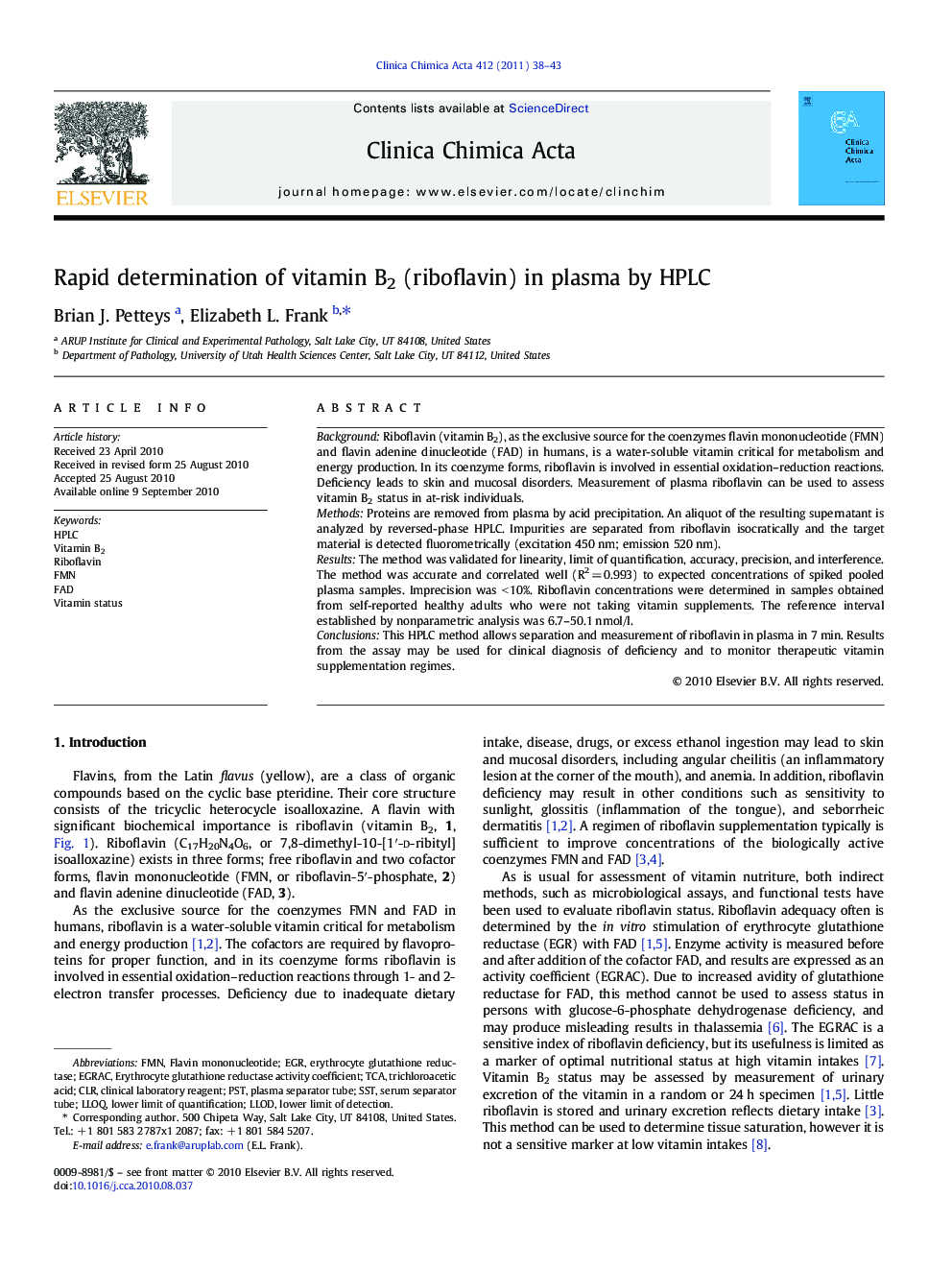| Article ID | Journal | Published Year | Pages | File Type |
|---|---|---|---|---|
| 1965633 | Clinica Chimica Acta | 2011 | 6 Pages |
BackgroundRiboflavin (vitamin B2), as the exclusive source for the coenzymes flavin mononucleotide (FMN) and flavin adenine dinucleotide (FAD) in humans, is a water-soluble vitamin critical for metabolism and energy production. In its coenzyme forms, riboflavin is involved in essential oxidation–reduction reactions. Deficiency leads to skin and mucosal disorders. Measurement of plasma riboflavin can be used to assess vitamin B2 status in at-risk individuals.MethodsProteins are removed from plasma by acid precipitation. An aliquot of the resulting supernatant is analyzed by reversed-phase HPLC. Impurities are separated from riboflavin isocratically and the target material is detected fluorometrically (excitation 450 nm; emission 520 nm).ResultsThe method was validated for linearity, limit of quantification, accuracy, precision, and interference. The method was accurate and correlated well (R2 = 0.993) to expected concentrations of spiked pooled plasma samples. Imprecision was < 10%. Riboflavin concentrations were determined in samples obtained from self-reported healthy adults who were not taking vitamin supplements. The reference interval established by nonparametric analysis was 6.7–50.1 nmol/l.ConclusionsThis HPLC method allows separation and measurement of riboflavin in plasma in 7 min. Results from the assay may be used for clinical diagnosis of deficiency and to monitor therapeutic vitamin supplementation regimes.
